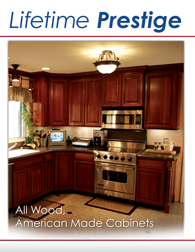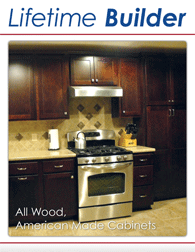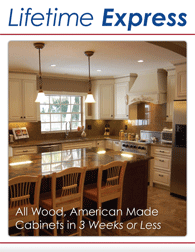Finishes: Colors & Stains
roulette, (from French: “small wheel”), gambling game in which players bet on which red or black numbered compartment of a 👄 revolving wheel a small ball (spun in the opposite direction) will come to rest within. Bets are placed on a 👄 table marked to correspond with the compartments of the wheel. It is played in casinos worldwide. Roulette is a banking 👄 game, and all bets are placed against the bank—that is, the house, or the proprietor of the game. As a 👄 big-time betting game, it has had its popularity superseded in the United States and the Caribbean islands by others, notably 👄 craps, blackjack, and poker. Fanciful stories about the origin of roulette include its invention by the 17th-century French mathematician Blaise 👄 Pascal, by a French monk, and by the Chinese, from whom it was supposedly transmitted to France by Dominican monks. 👄 In reality, roulette was derived in France in the early 18th century from the older games hoca and portique, and 👄 it is first mentioned under its current name in 1716 in Bordeaux. Following several modifications, roulette achieved its present layout 👄 and wheel structure about 1790, after which it rapidly gained status as the leading game in the casinos and gambling 👄 houses of Europe. During the years 1836 to 1933, roulette was banned in France.
Equipment The roulette table is composed of 👄 two sections, the wheel itself and the betting layout, better known as the roulette layout. There are two styles of 👄 roulette tables. One has a single betting layout with the roulette wheel at one end, and the other has two 👄 layouts with the wheel in the centre. The wheel spins horizontally. Heading the layout design, which is printed on green 👄 baize, is a space containing the figure 0 (European style) or the figures 0 and 00 (American style, although such 👄 wheels were used also in Europe during the 18th and 19th centuries). The main portion of the design is composed 👄 of 36 consecutively numbered rectangular spaces, alternately coloured red and black and arranged in three columns of 12 spaces each, 👄 beginning with 1 at the top and concluding with 36 at the bottom. Directly below the numbers are three blank 👄 spaces (on some layouts these are marked “2 to 1” and are located on the players’ side of the table). 👄 On either side of these or along one side of the columns are rectangular spaces marked “1st 12,” “2nd 12,” 👄 and “3rd 12” on American-style layouts. On European-style layouts these terms are “12p” (première), “12m” (milieu), and “12d” (dernière douzaine). 👄 Six more spaces are marked “red” (rouge), “black” (noir), “even” (pair), “odd” (impair), “1–18” (low, or manque), and “19–36” (high, 👄 or passe). The roulette wheel consists of a solid wooden disk slightly convex in shape. Around its rim are metal 👄 partitions known as separators or frets, and the compartments or pockets between these are called canoes by roulette croupiers. Thirty-six 👄 of these compartments, painted alternately red and black, are numbered nonconsecutively from 1 to 36. On European-style wheels a 37th 👄 compartment, painted green, carries the sign 0, and on American wheels two green compartments on opposite sides of the wheel 👄 carry the signs 0 and 00. The wheel, its spindle perfectly balanced, spins smoothly in an almost frictionless manner. The 👄 standard roulette table employs up to 10 sets of wheel checks (usually called chips). Each set is differently coloured; each 👄 traditionally consists of 300 chips; and there is one set for each player. The chips usually have a single basic 👄 value, although some casinos also sell chips of lesser value. The colour of the chips indicates the player, not the 👄 value of the chips. If a player wishes to buy chips of slightly higher value, the croupier places a marker 👄 indicating that value on top of the table’s stack of chips of the colour corresponding to the chips purchased. Most 👄 casinos also have high-value chips that can be wagered at any gaming table. Unlike roulette chips, these have their numbered 👄 values printed on them. Get a Britannica Premium subscription and gain access to exclusive content. Subscribe Now
Bets It is possible 👄 to place the following bets in roulette: (1) straight, or single-number (en plein), in which the chips are placed squarely 👄 on one number of the layout, including 0 (and also 00 on American layouts), so that the chips do not 👄 touch any of the lines enclosing the number; a winning single-number bet pays 35 to 1 (for each unit bet, 👄 a winning player receives his original bet and 35 matching units); (2) split, or 2-number (à cheval), in which the 👄 chips are placed on any line separating any two numbers; if either wins, payoff odds are 17 to 1; (3) 👄 street, or 3-number (transversale pleine), in which the chips are placed on the outside line of the layout, betting the 👄 three numbers opposite the chips; payoff odds on any of the three numbers are 11 to 1; (4) square, quarter, 👄 corner, or 4-number (en carré), in which the chips are placed on the intersection of the lines between any four 👄 numbers; payoff odds are 8 to 1; (5) line, or 6-number (sixaine or transversale six), in which the chips are 👄 placed on the intersection of the sideline and a line between two “streets”; payoff odds are 5 to 1; (6) 👄 column (colonne), or 12-number, in which the chips are placed on one of the three blank spaces (some layouts have 👄 three squares, marked “1st,” “2nd,” and “3rd”) at the bottom of the layout, thus betting the 12 numbers above the 👄 space; payoff odds are 2 to 1; (7) dozens (douzaine), or 12-number, in which the chips are placed on one 👄 of the spaces of the layout marked “12,” betting the numbers 1–12, 13–24, or 25–36; payoff odds are 2 to 👄 1; (8) low-number or high-number, in which the chips are placed on the layout space marked “1–18” (manque) or on 👄 the space marked “19–36” (passe); payoff is even money; (9) black or red, in which the chips are placed on 👄 a space of the layout marked “black” (noir) or on a space marked “red” (rouge; some layouts have a large 👄 black or red diamond-shaped design instead of the words); payoff is even money; (10) odd-number or even-number, in which the 👄 chips are placed on the space of the layout marked “odd” (impair) or on the space marked “even” (pair); payoff 👄 is even money. On layouts with a single zero (European style), the 0 may be included in a 2-number bet 👄 with any adjoining number, in a 3-number bet with 1 and 2 or with 2 and 3, and in a 👄 4-number bet with 1, 2, and 3 at the regular odds for these bets. With the American-style 0 and 00, 👄 a 5-number line bet also is possible, the player placing his chips on the corner intersection of the line separating 👄 the 1, 2, 3 from the 0 and 00, with payoff odds of 6 to 1.



